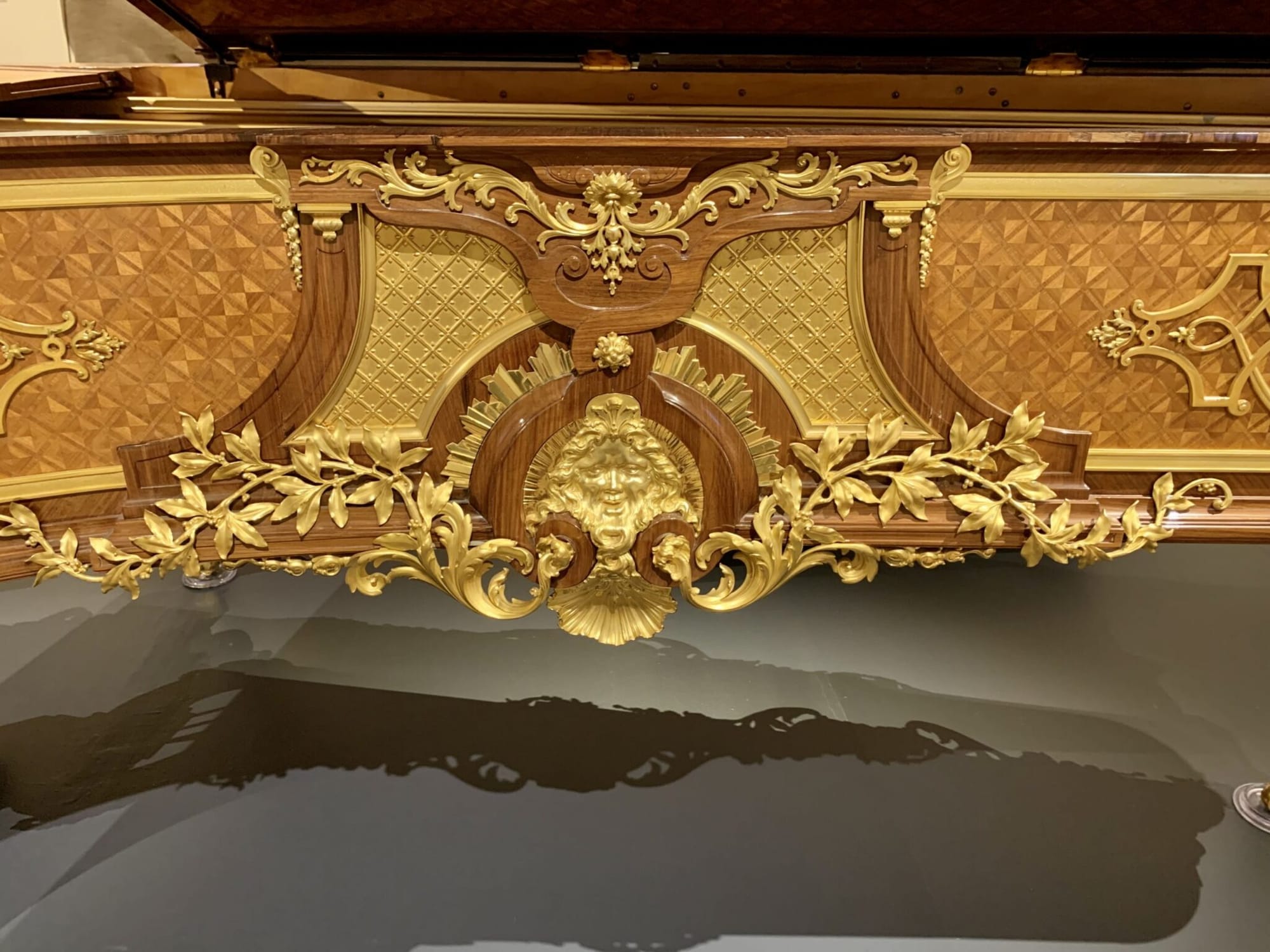
The Musical Instrument Museum in Scottsdale is one of my favorite places. It’s immense. The upper floor is organized by continent. As you approach an exhibit, your headphones will automatically play a recording of the instrument or genre. No pushing of buttons, no scanning of codes. What to see

The Musical Instrument Museum in Scottsdale is one of my favorite places. It’s immense. The upper floor is organized by continent. As you approach an exhibit, your headphones will automatically play a recording of the instrument or genre. No pushing of buttons, no scanning of codes. What to see a Baroque sackbut? Head to the European room. How about an electric guitar made from a five gallon oil can? That would be in Africa.
The lower floor holds special exhibitions, the instrument restoration shop, a room of music-making machines, and a few other things. Currently, the special exhibit is Treasures: Legendary Musical Instruments. Since I’ve posted photos from MIM before, I’m going to concentrate on Treasures this time.
If you’re a music lover, be sure to put this excellent museum on your list of places to visit in Scottsdale.
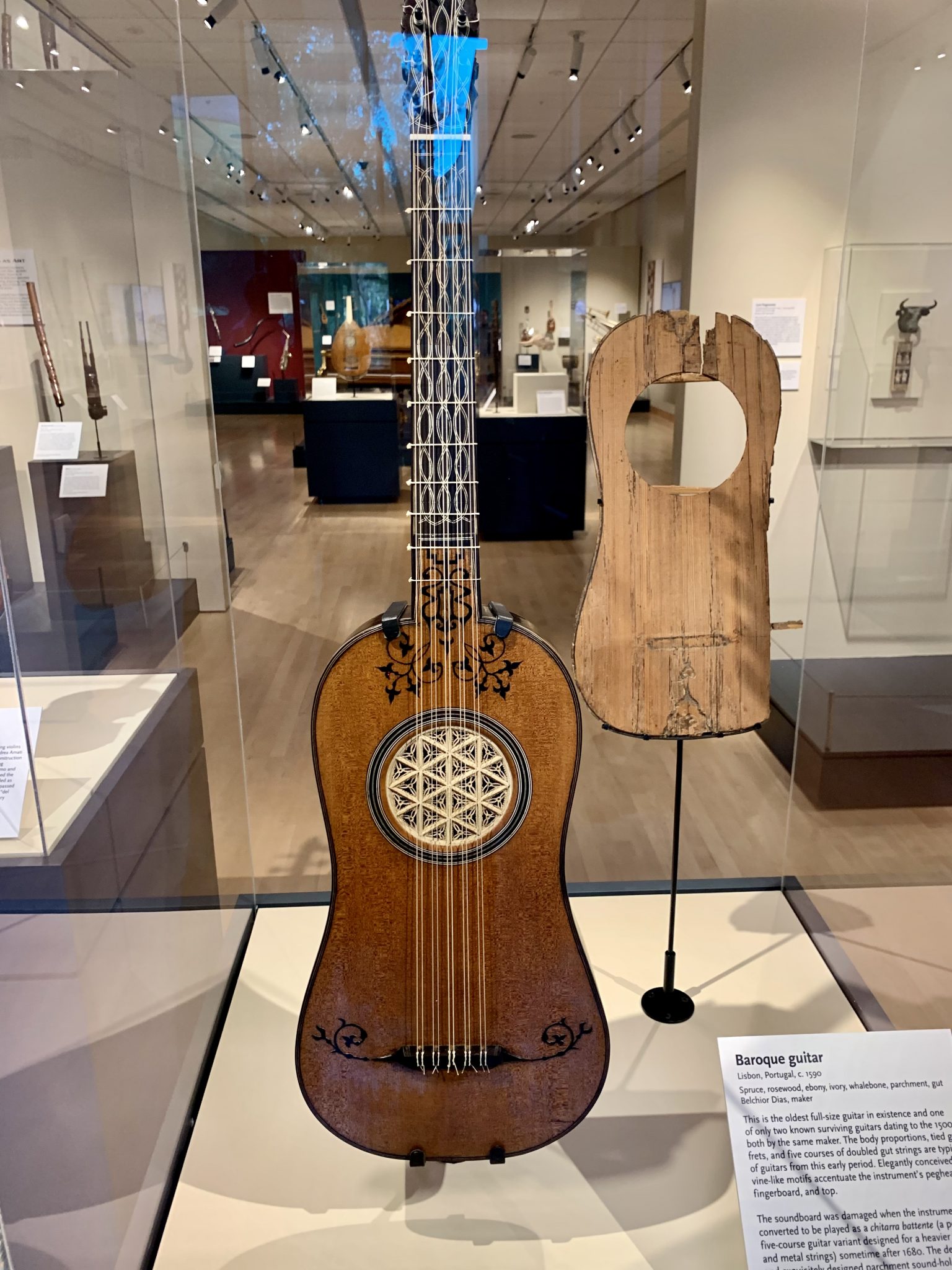
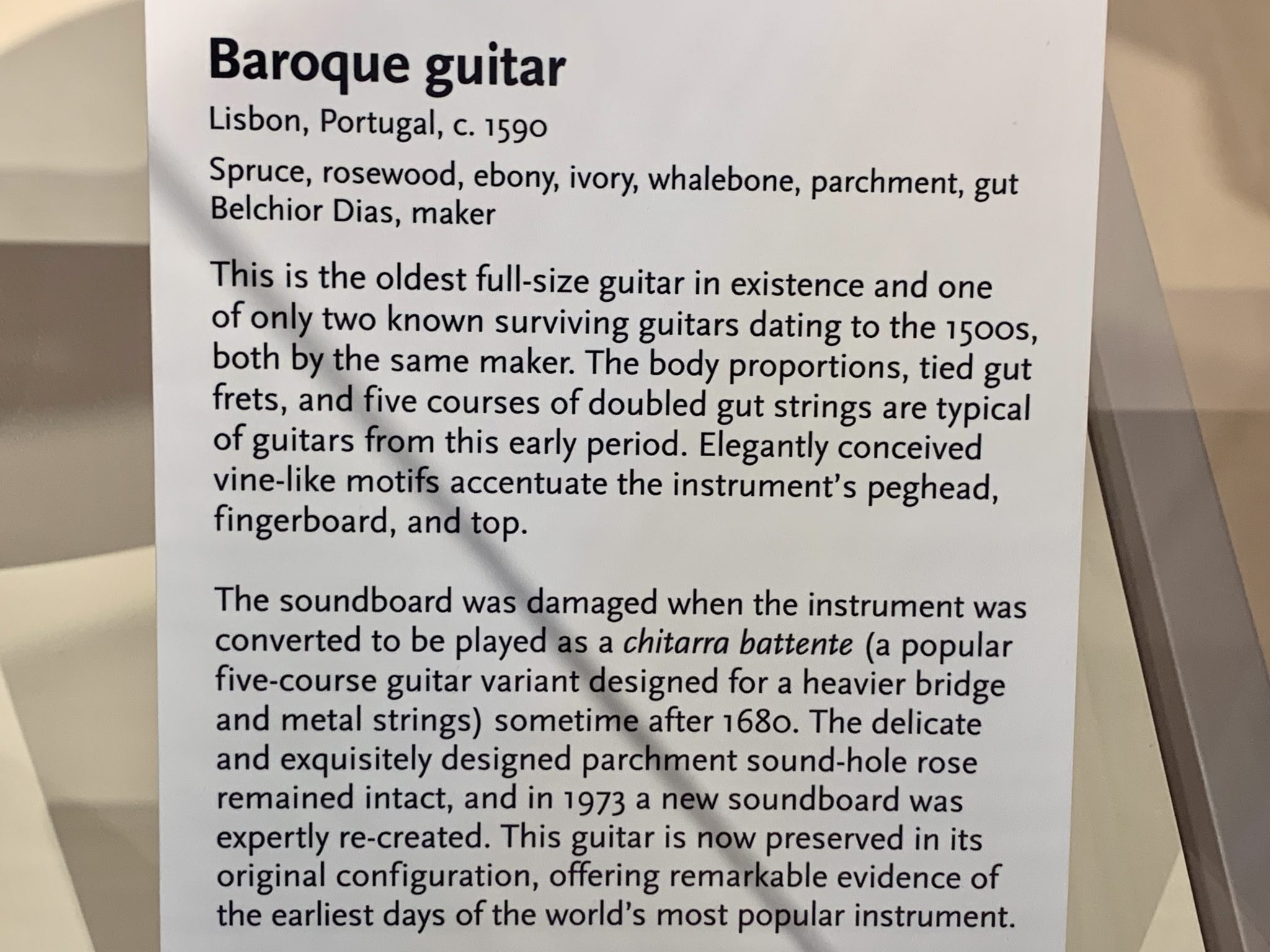

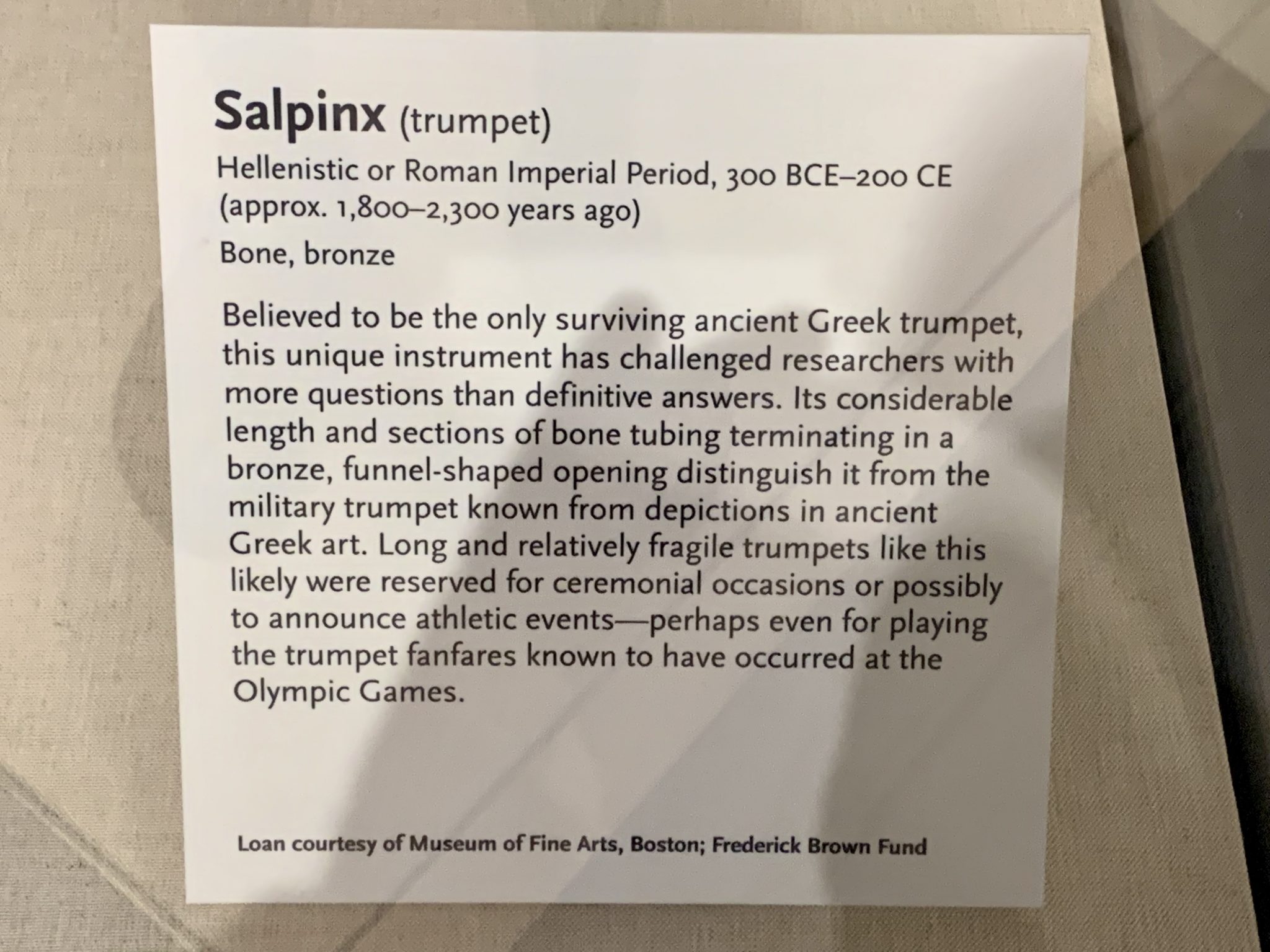
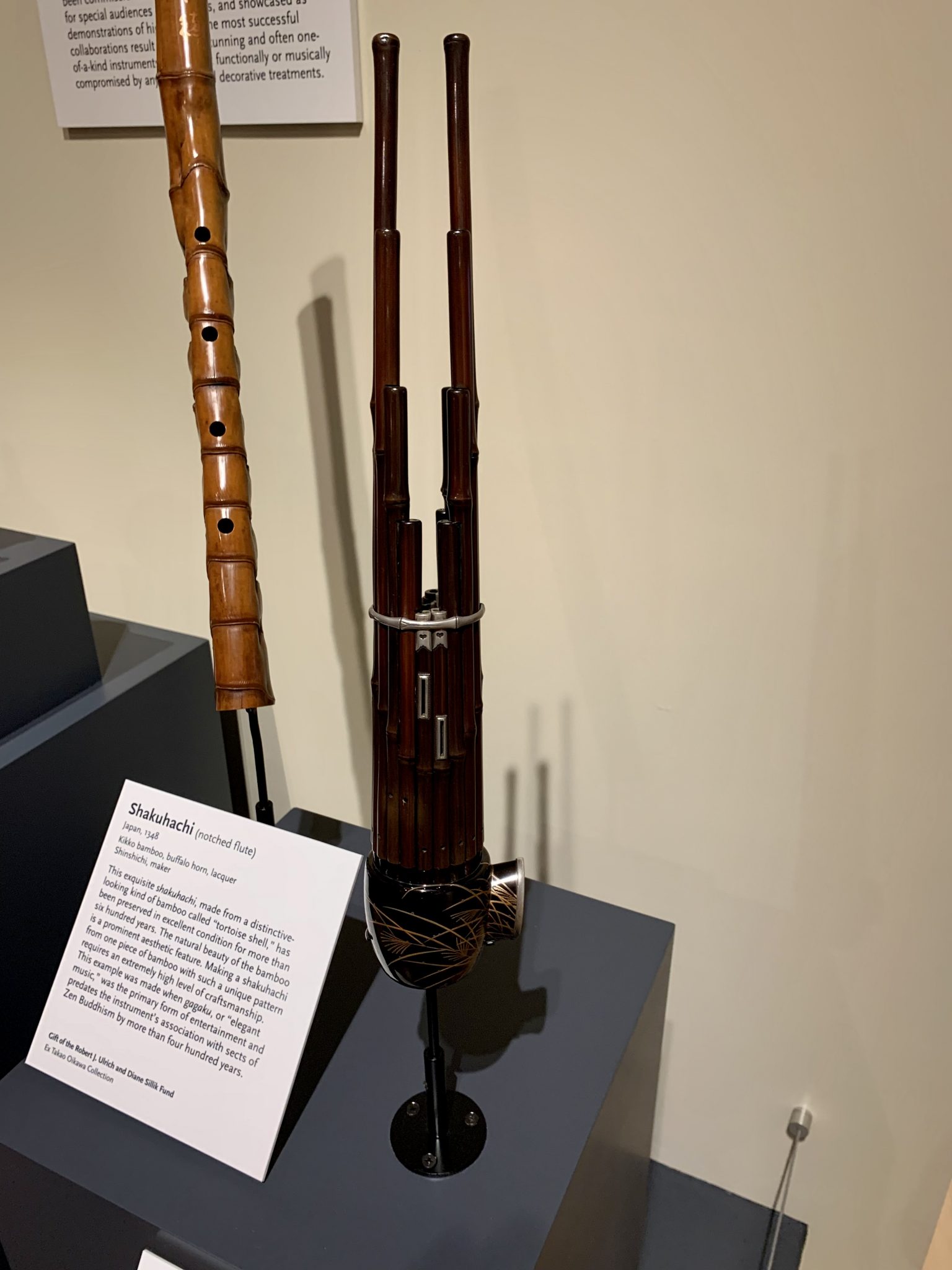
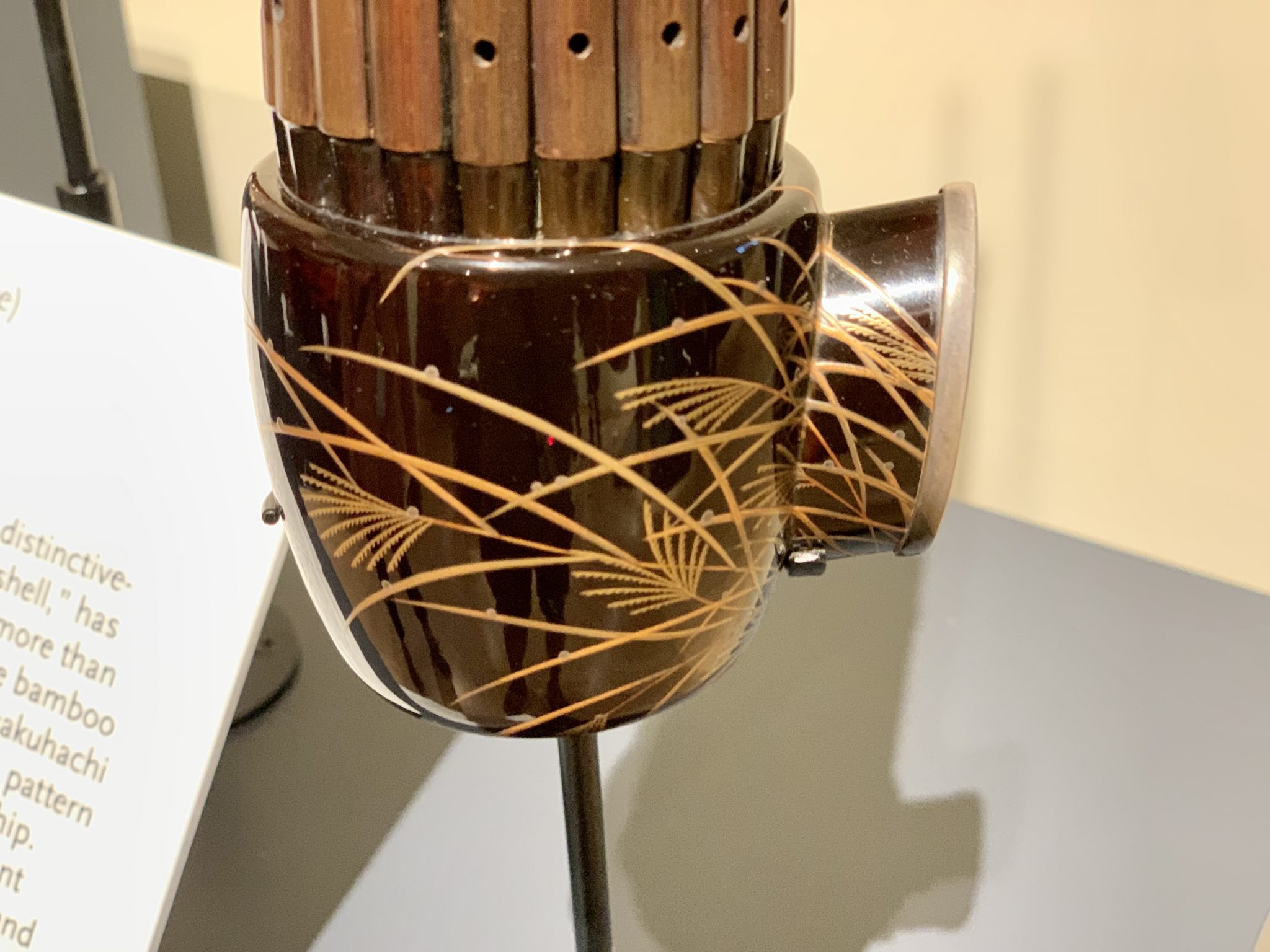
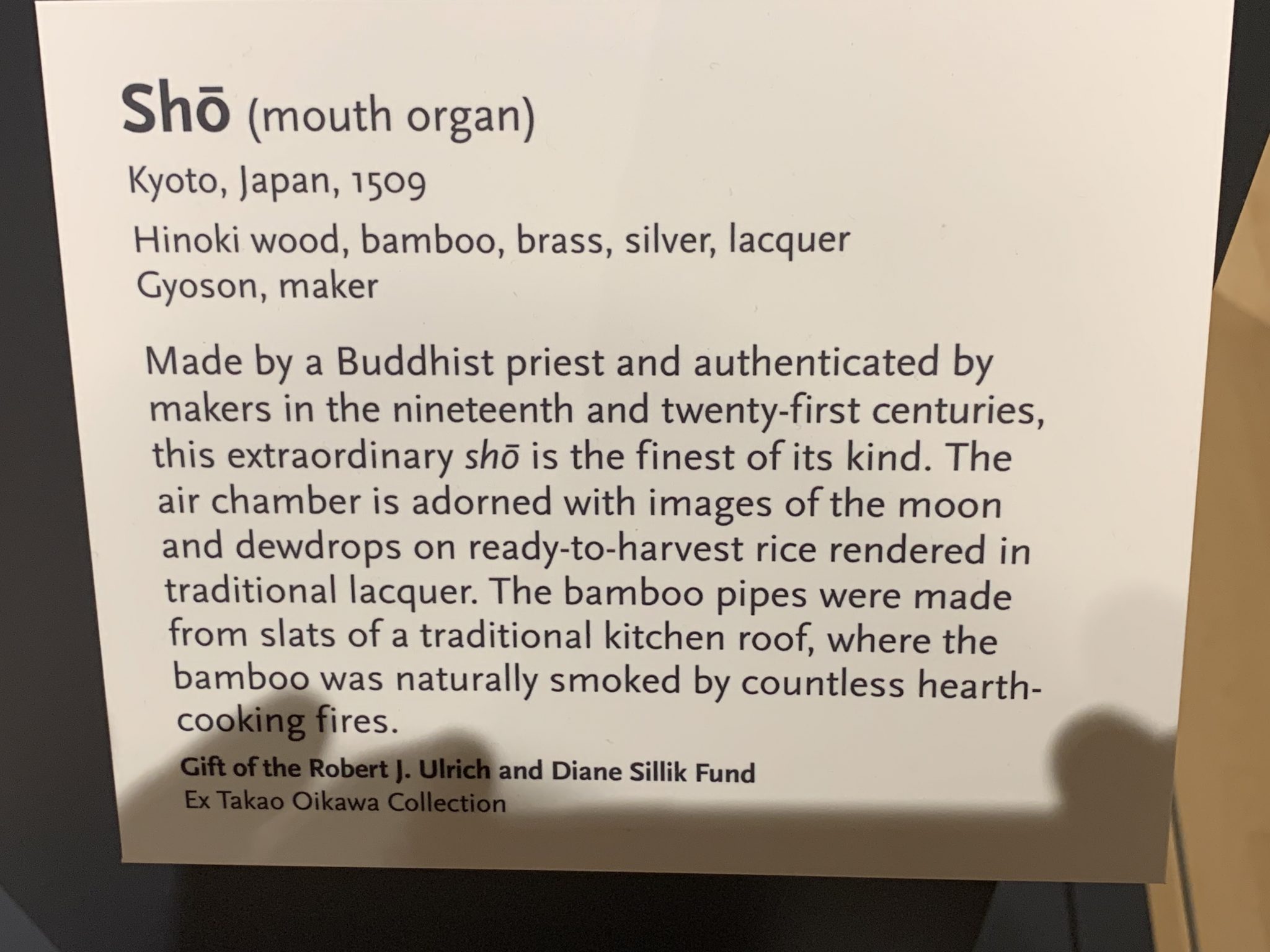
When Americans think of “the best” piano, they usually think of Steinway. But other countries have first rate manufacturers, too. In France, it’s Pleyel. Austria has Bõsendorfer. Erard was ahead of its time as a kind of EU piano. Originally a French company, Sebastian Erard moved his business to England after the French Revolution. A smart move, since many of his customers were recently decapitated royals. Later, the business returned to France. This is an exceptionally ornate example of an Erard. The medallions on the side each weigh 35 pounds.
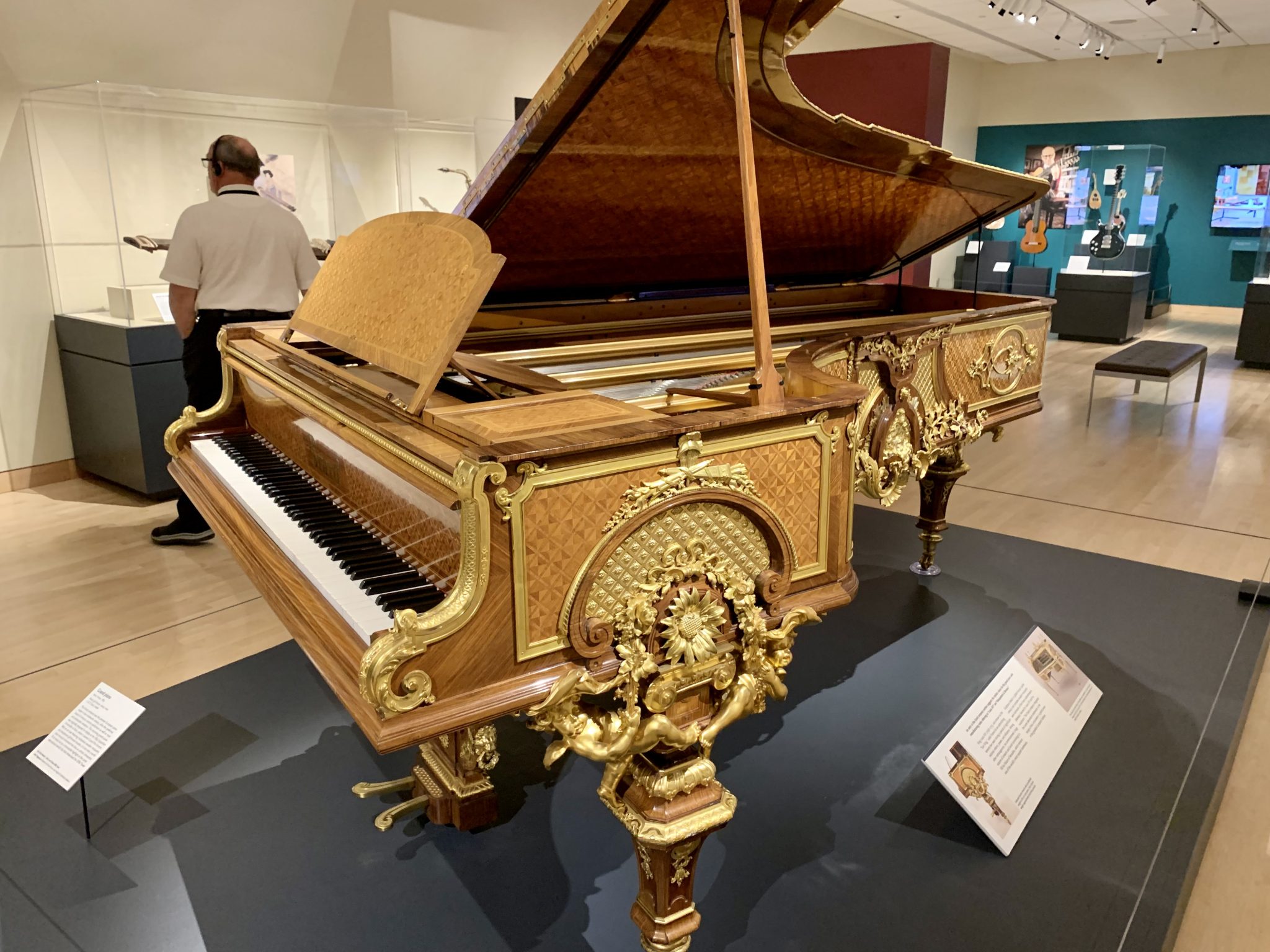
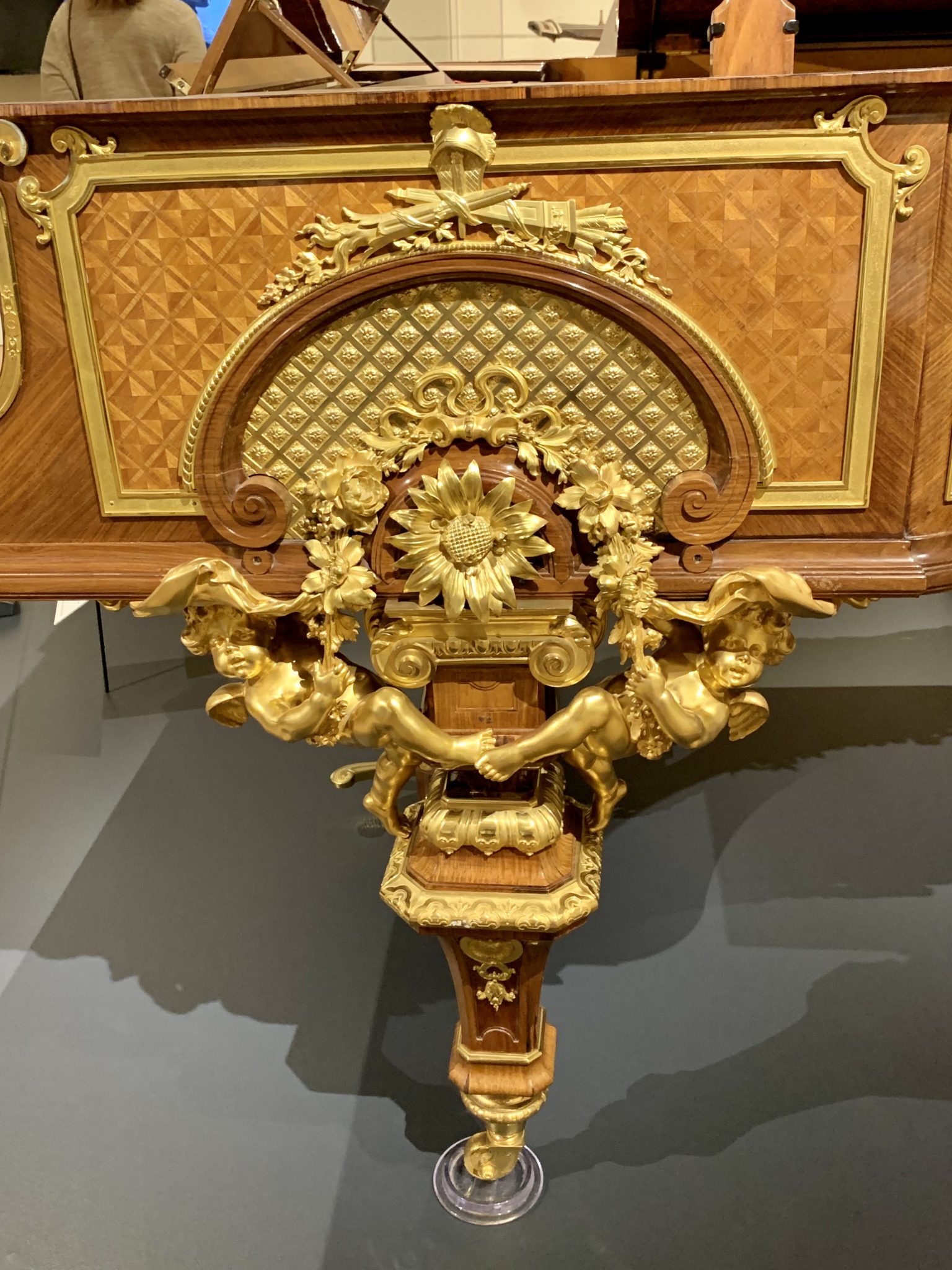
Notice that all the strings run straight from head to toe. In a modern piano, the bass strings run crosswise under the treble strings. This allows them to be longer for a fuller tone.
Note also that the corners of the case are joined together like a piece of furniture. This was straightforward, but affected the resonance of the instrument. Modern piano cases are made of a single length of laminated hardwood that is steamed, then bent into shape.

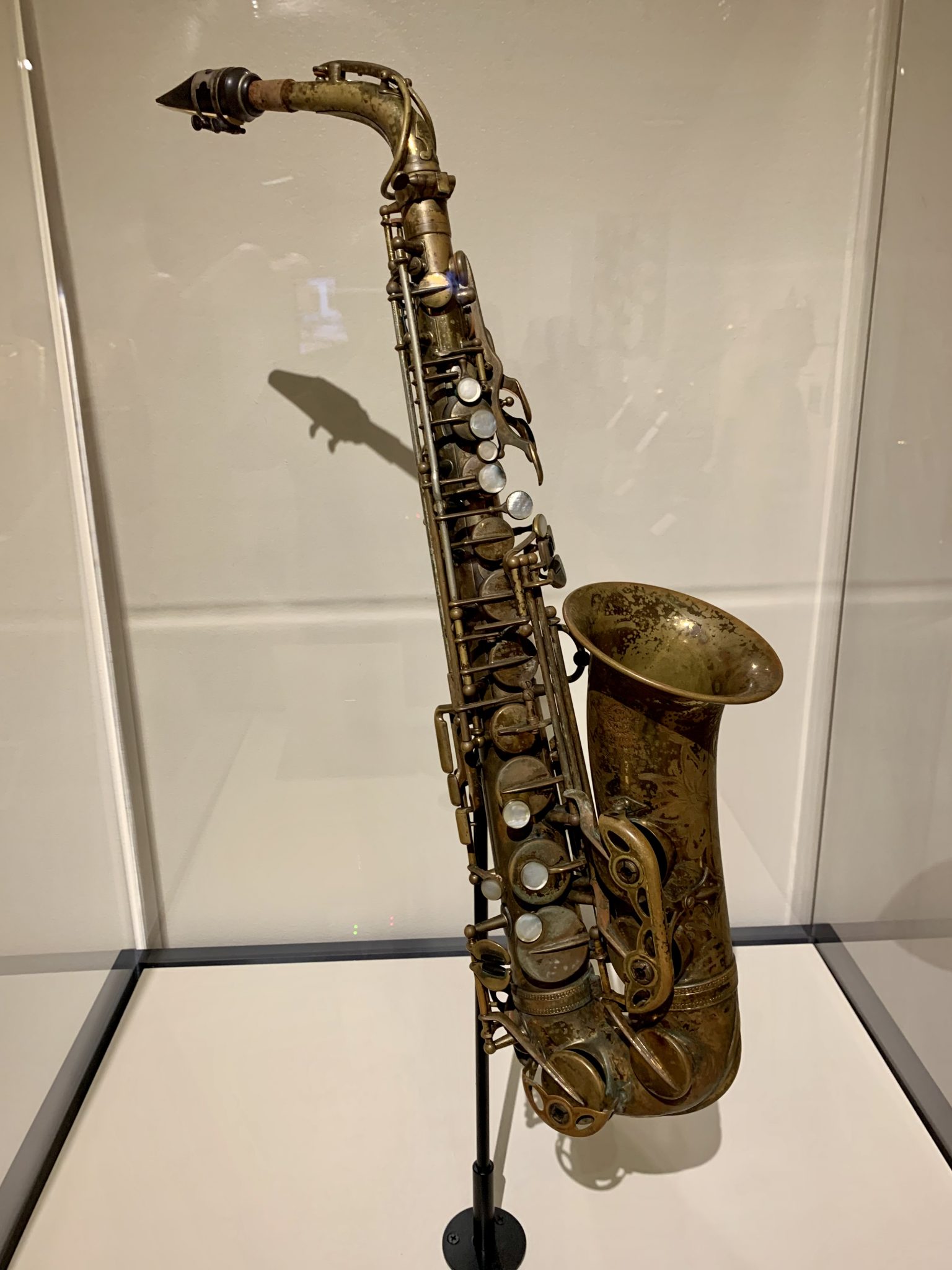
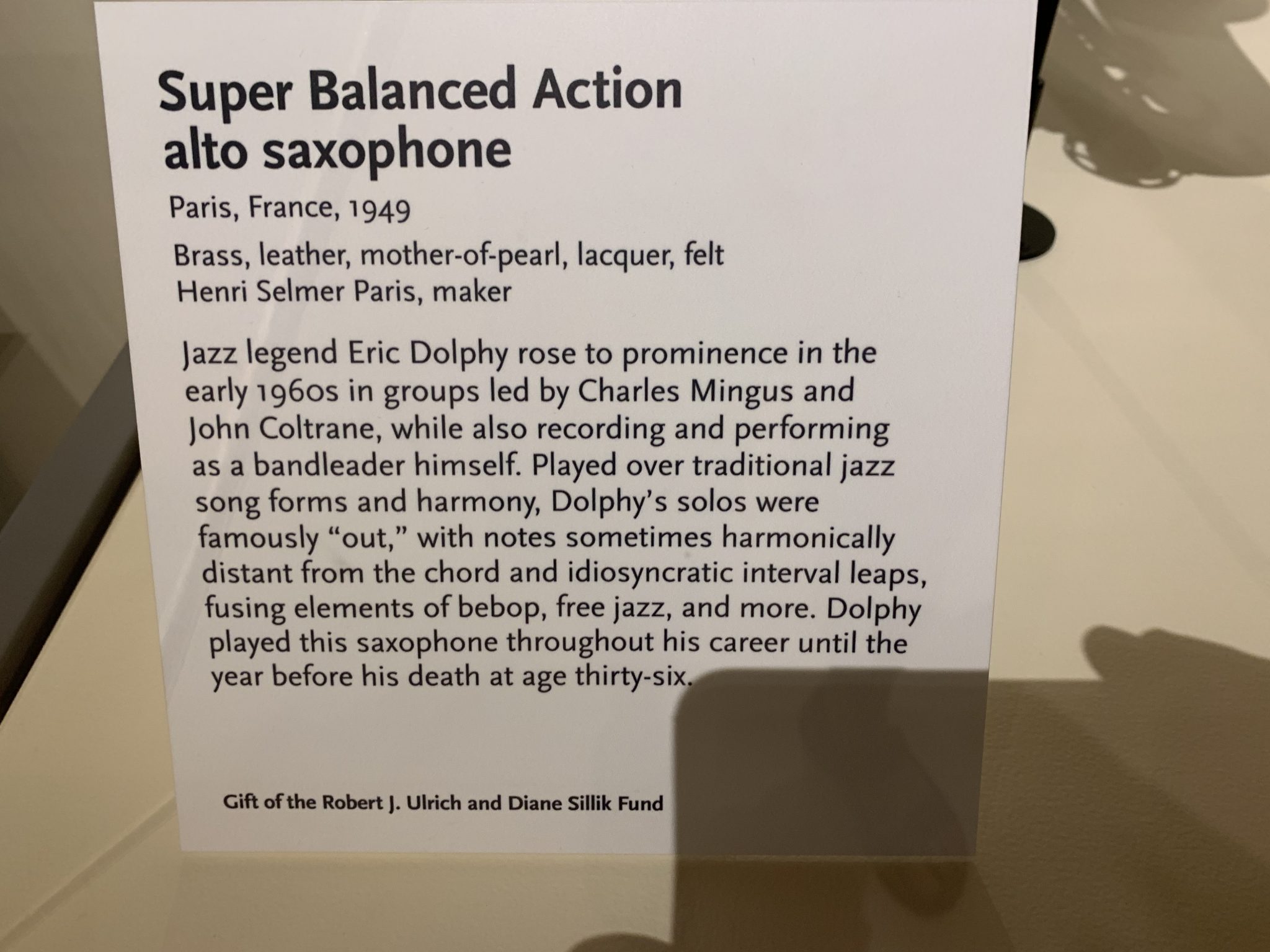
Another stunningly beautiful saxophone.

This beautifully made ukulele (pronounced oo-kuh-leh-lee, by the way) was made in honor of Jake Shimabukuro, one of today’s premier ukulele artists. Never hear of Jake? Here’s his arrangement of a song you may remember.

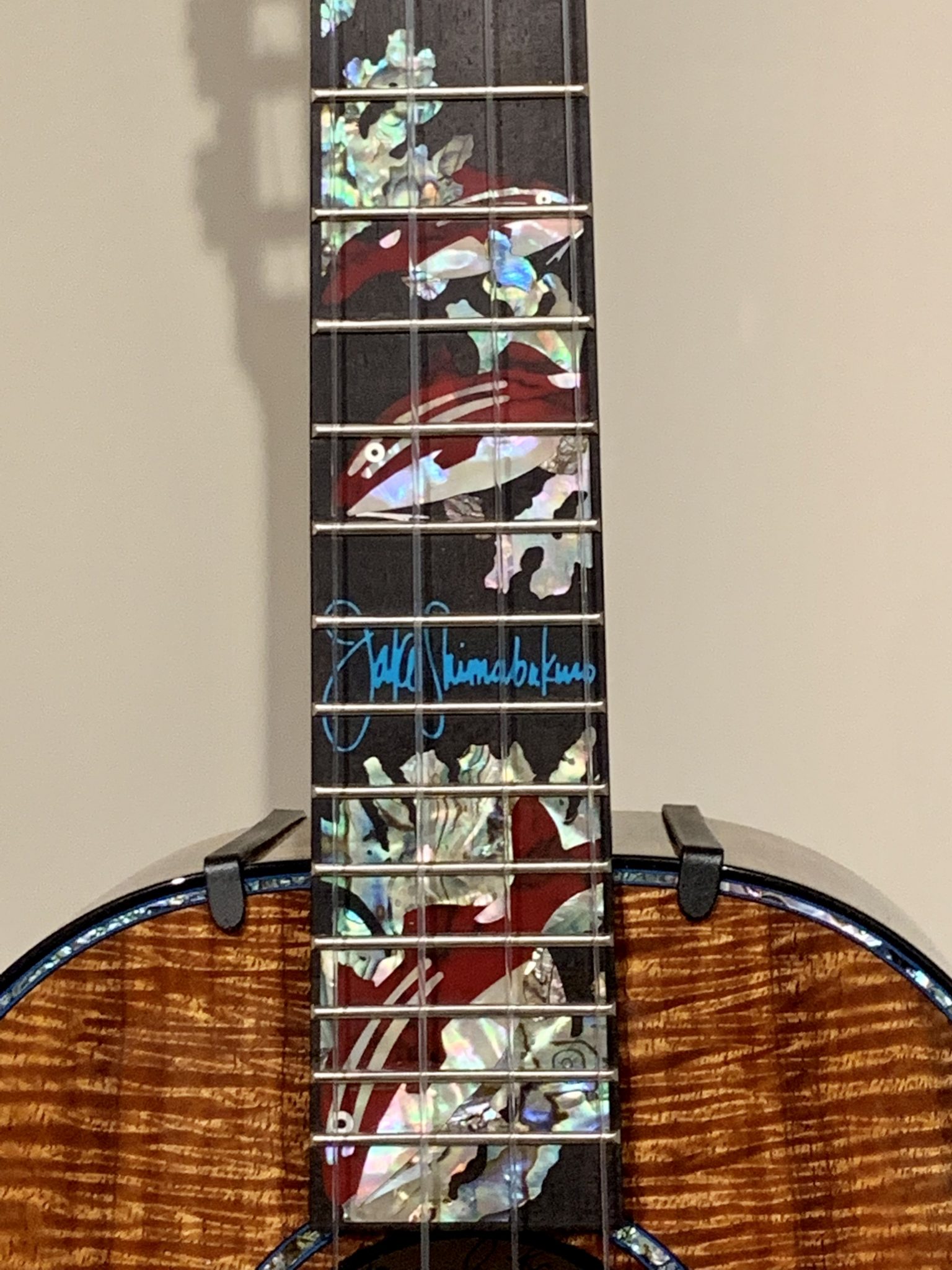
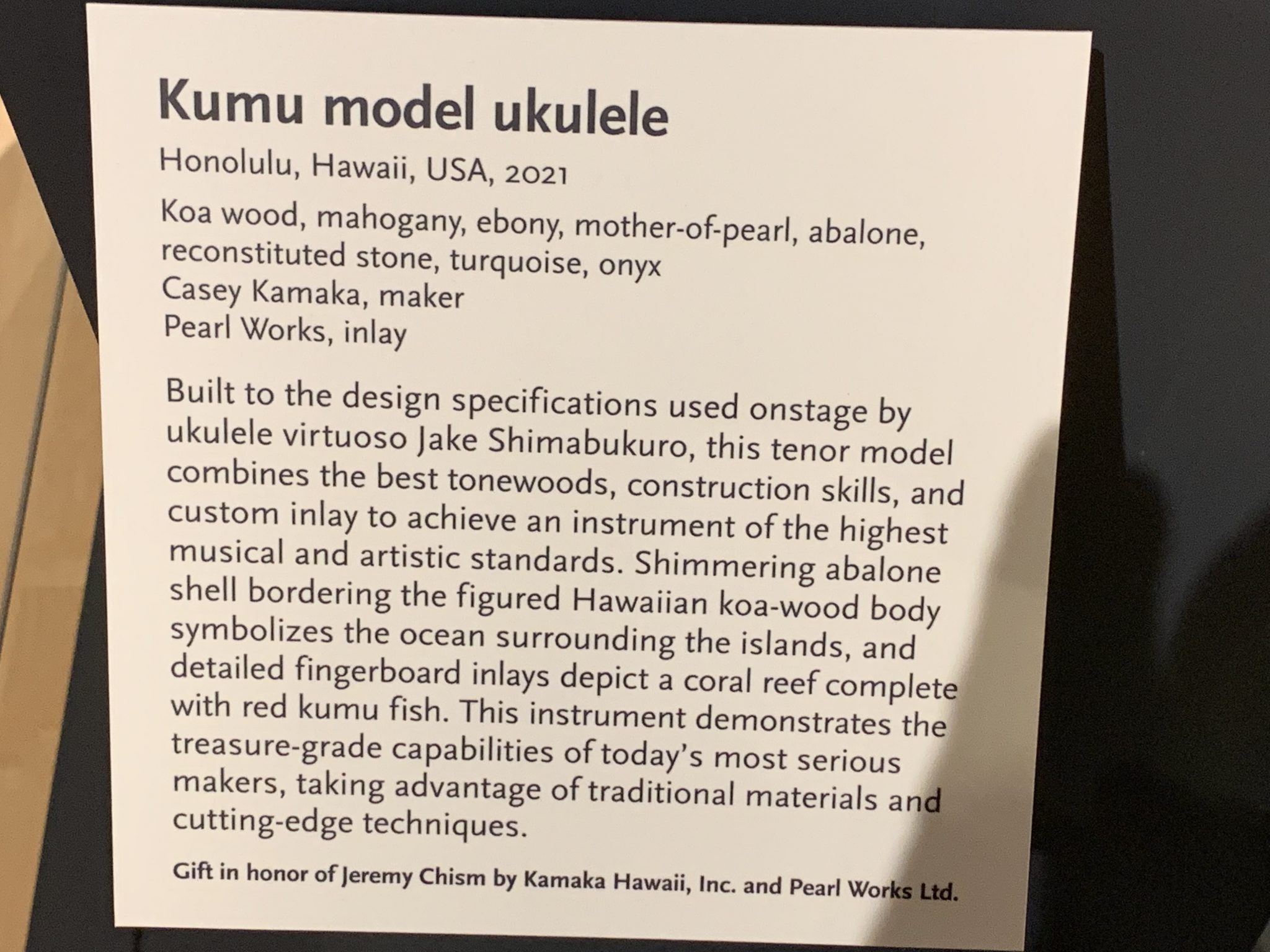
And now, a few instruments from the immense MIM collection.
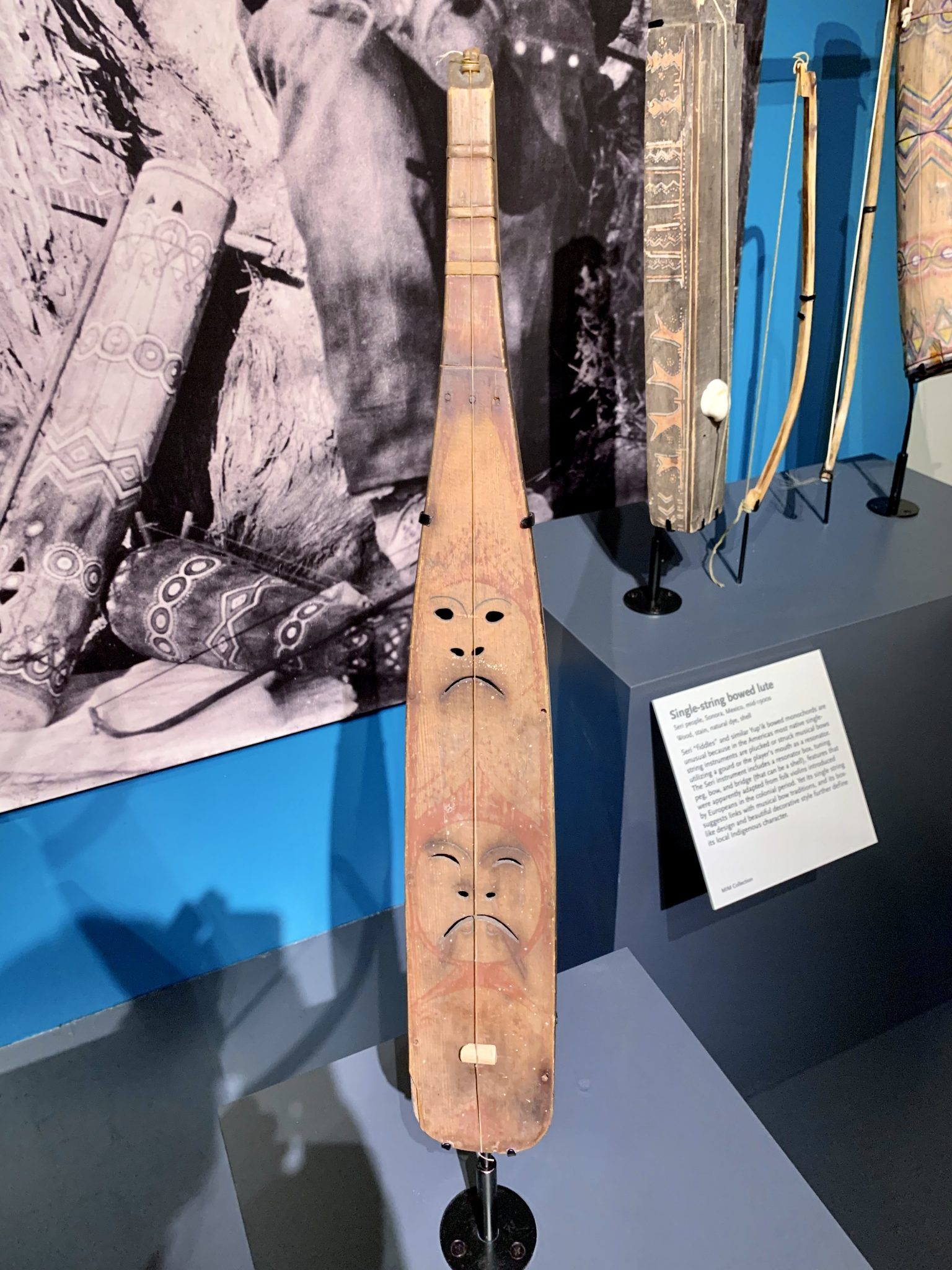
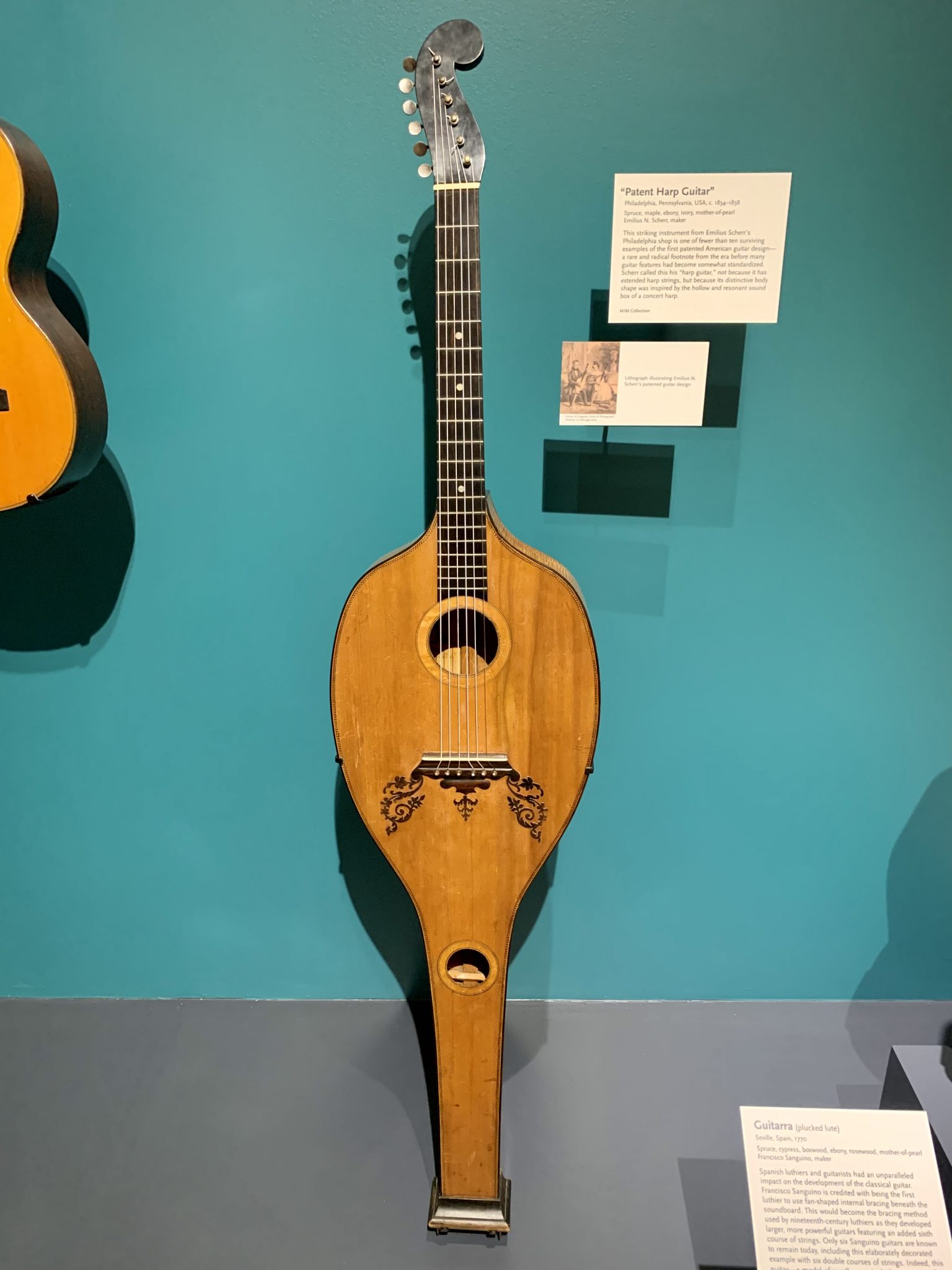
A large scale music box from the Mechanical Instruments room. Exhibits range from mechanisms you could hold in your hand, to one that’s over 2000 pounds.

Who knew that harmonicas could have bells like a trumpet?
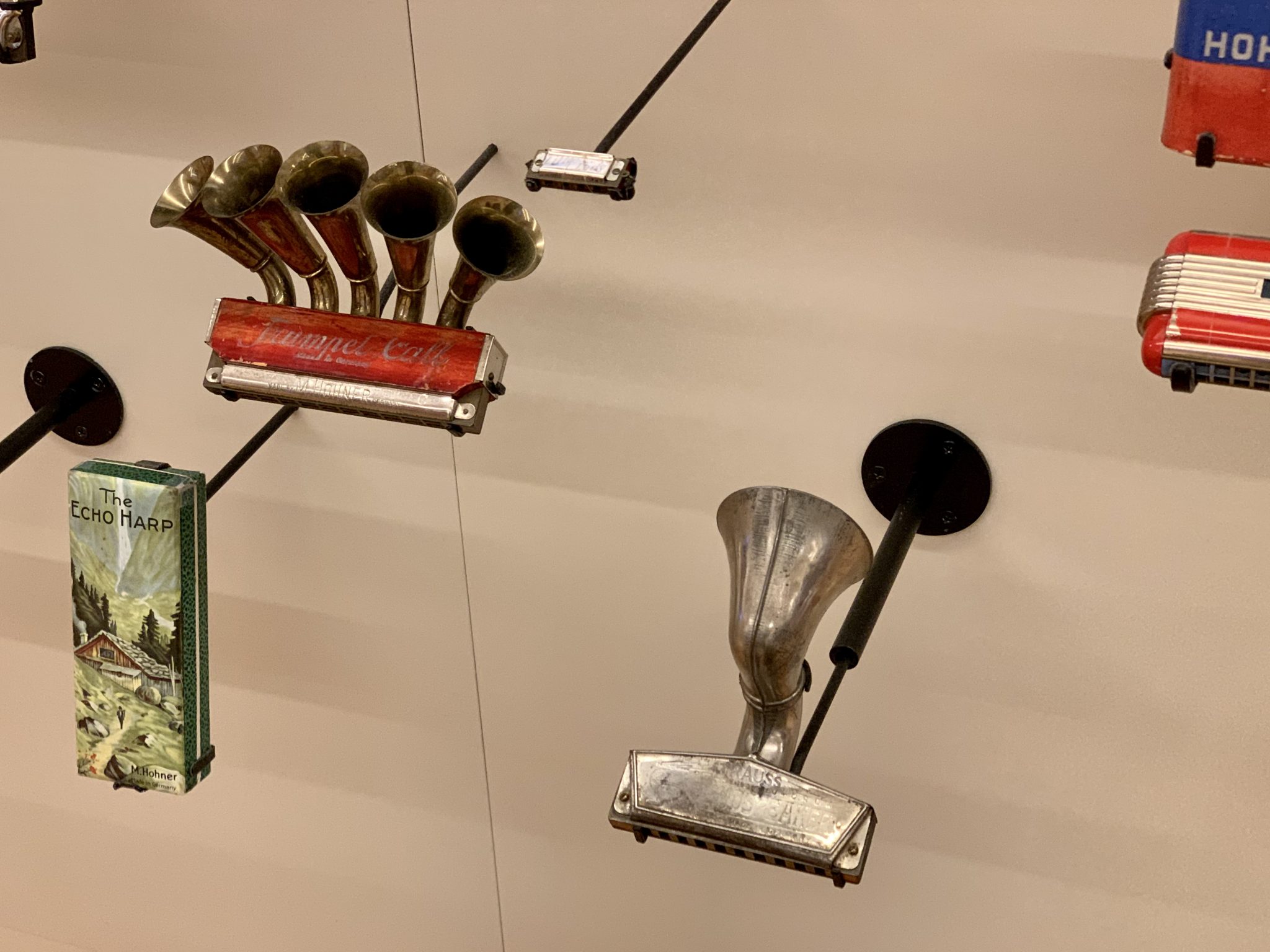
As a recovering accordionist, I have to show you these. Lord knows what the one with a bell sounds like. I want one!
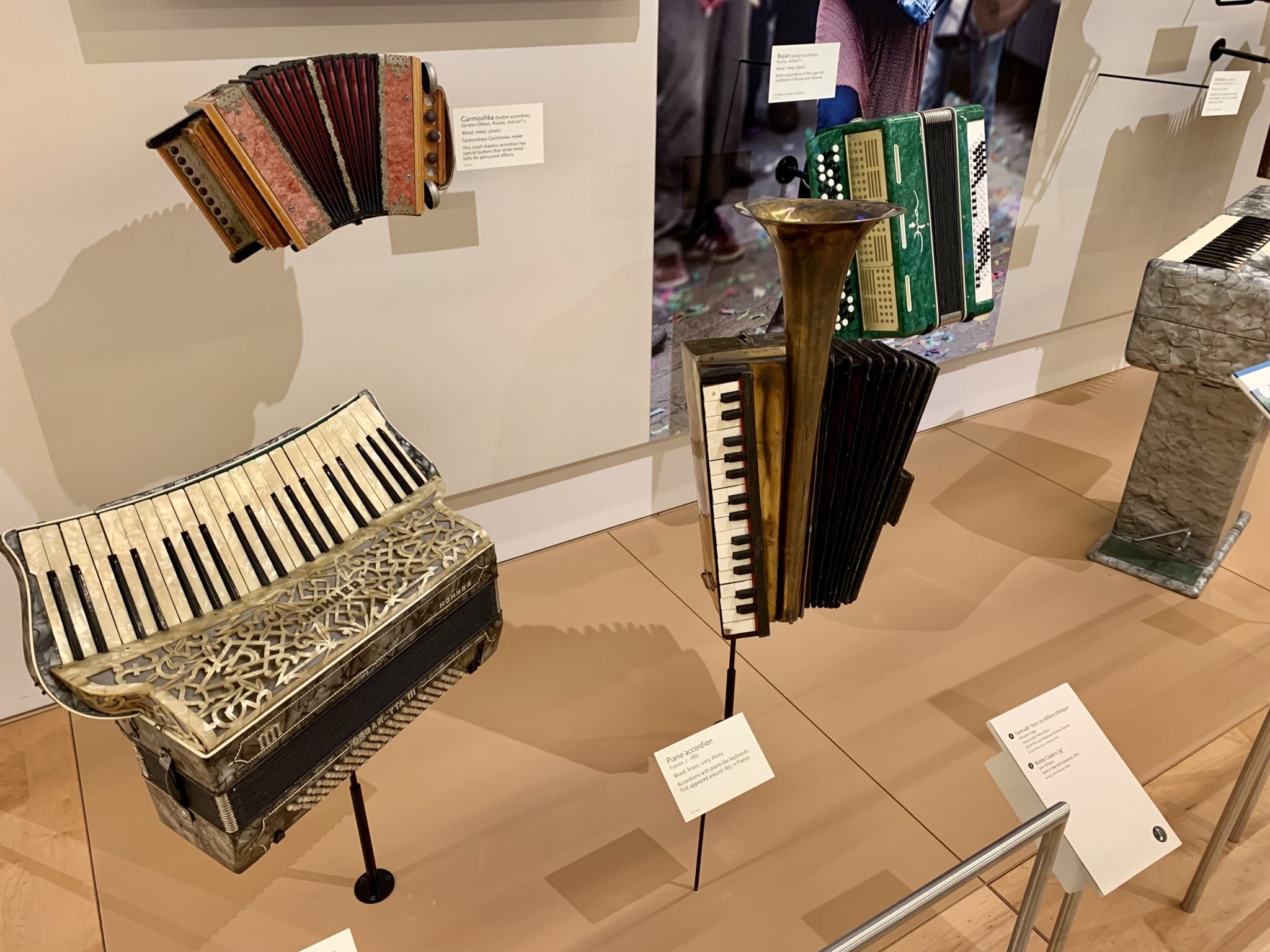
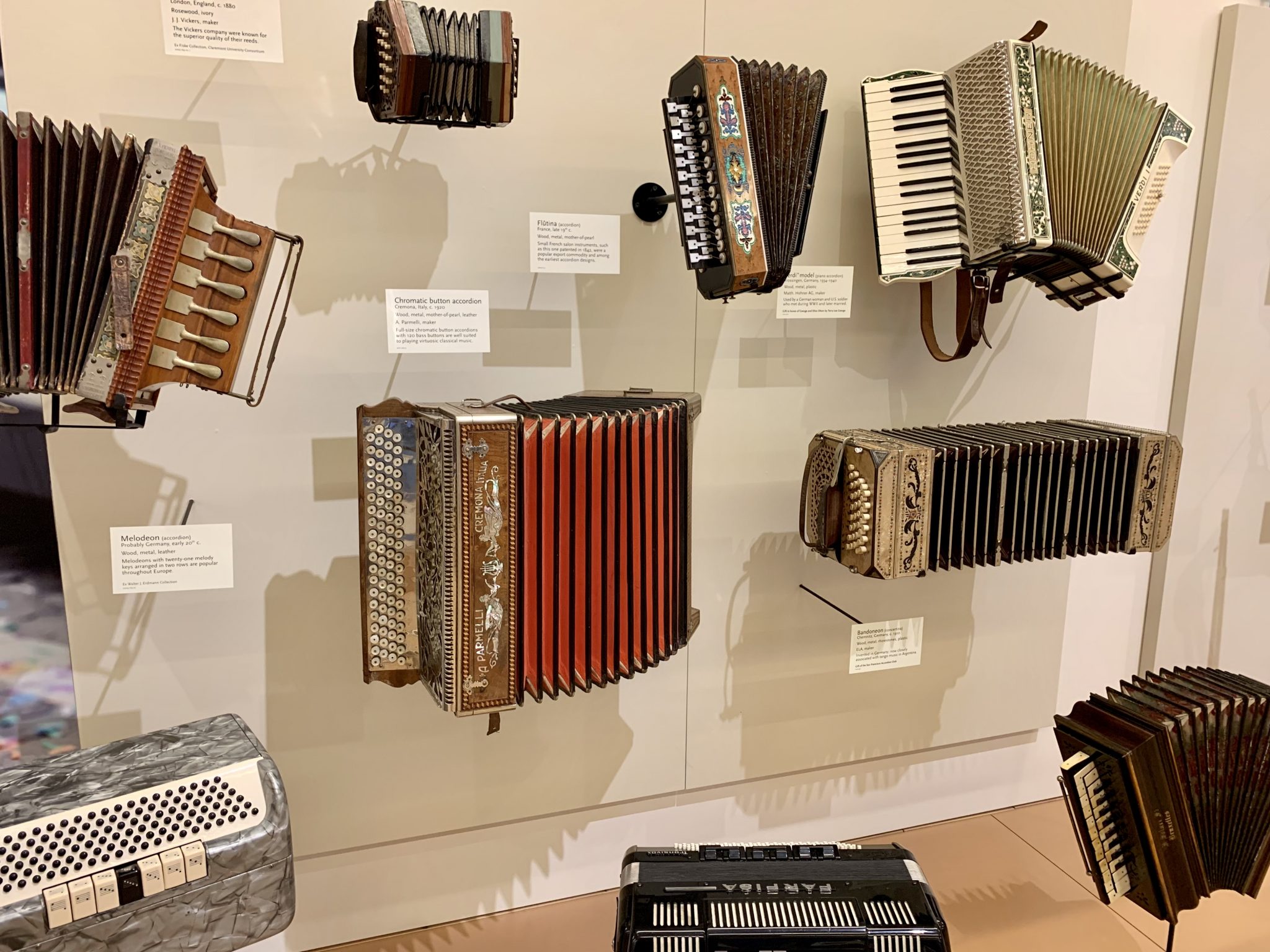
Speaking of bells, here’s some kind of brass instrument with multiple bells.
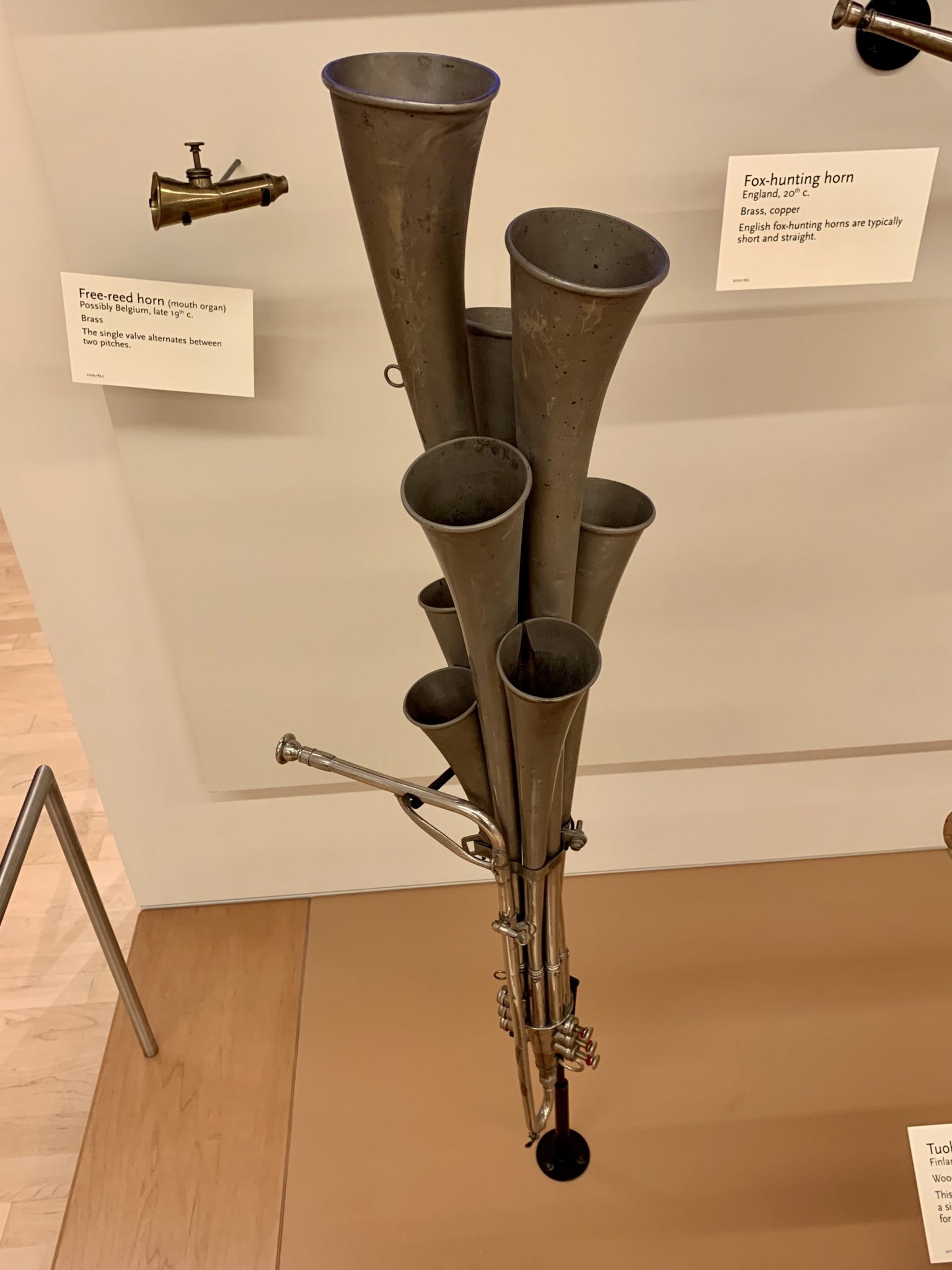
Around the time I was mesmerizing the public with Lady of Spain on my accordion, my brother was blatting away on the trombone. I include a couple of the more unusual ones here for his benefit. The first is called a soprano trombone. The photo doesn’t give much sense of scale. It’s about two feet long.

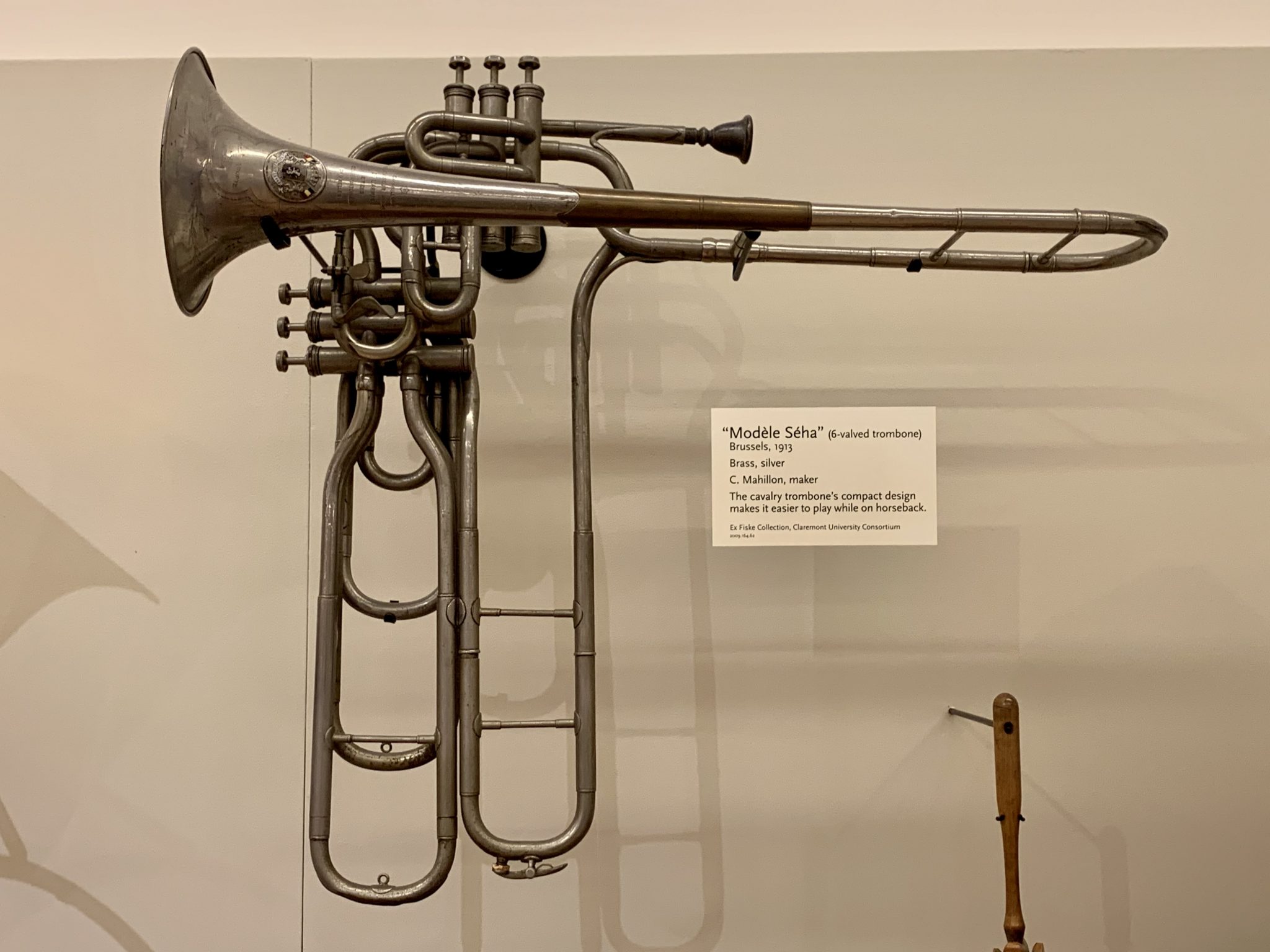
This is a famous piano, it’s known as “the kitchen piano”. It’s the first grand piano built by Henry Steinweg (better known as Steinway after he moved his family from Germany to America).
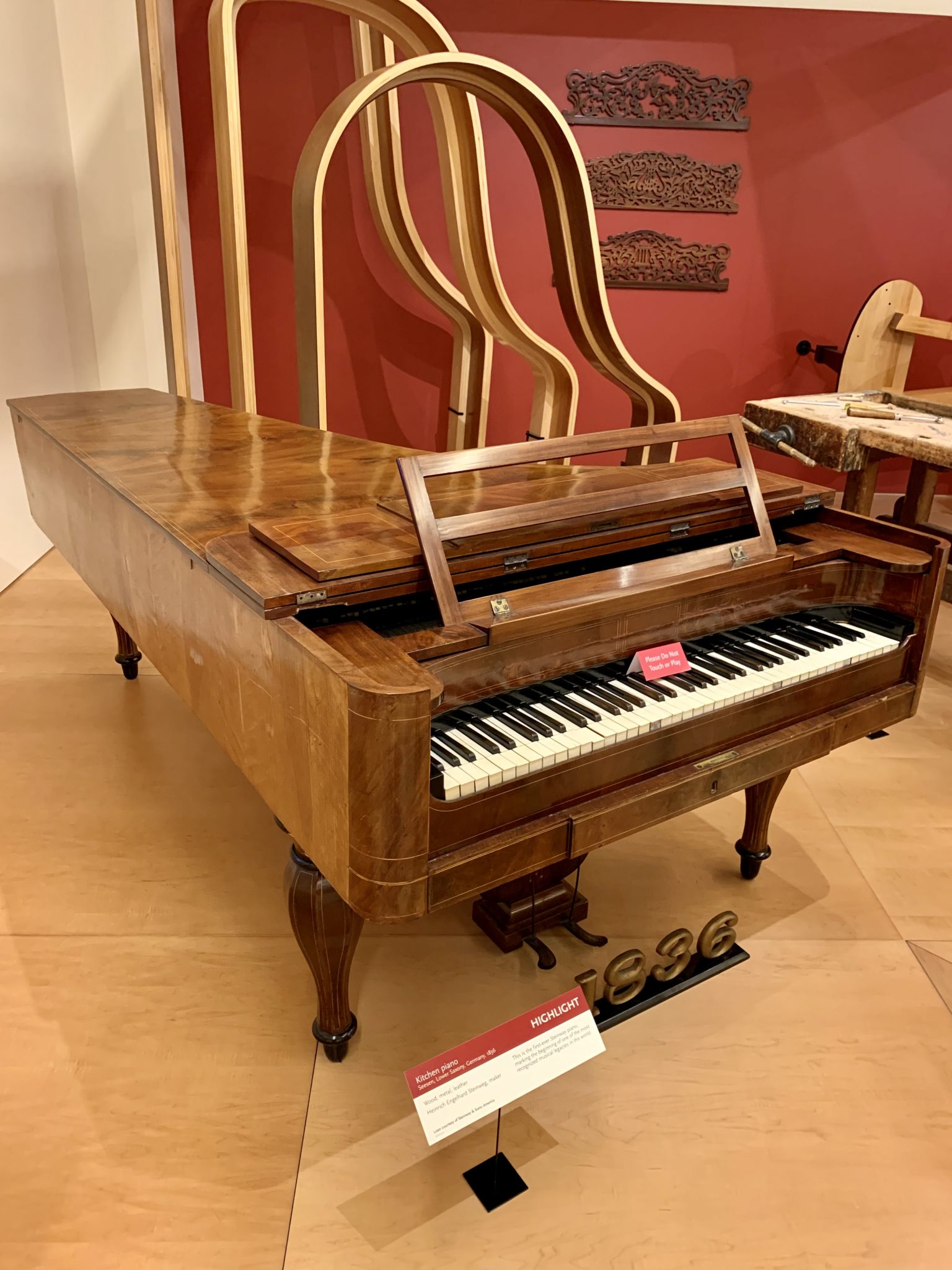
In case you ever wondered what goes on inside a grand piano when you press a key. It’s a lot more than a hammer banging on a string. The key is at the far right. This mechanism is replicated 88 times, one for each key.

I couldn’t resist including the venerable Hammond B-3 and rotating Leslie speaker. In my memory, the B-3 was much larger. During my days in rock bands, we hauled a somewhat smaller M-3 up endless flights of stairs to gigs. The Leslie was just as big. Of course for Rock use, the pedals were removed.
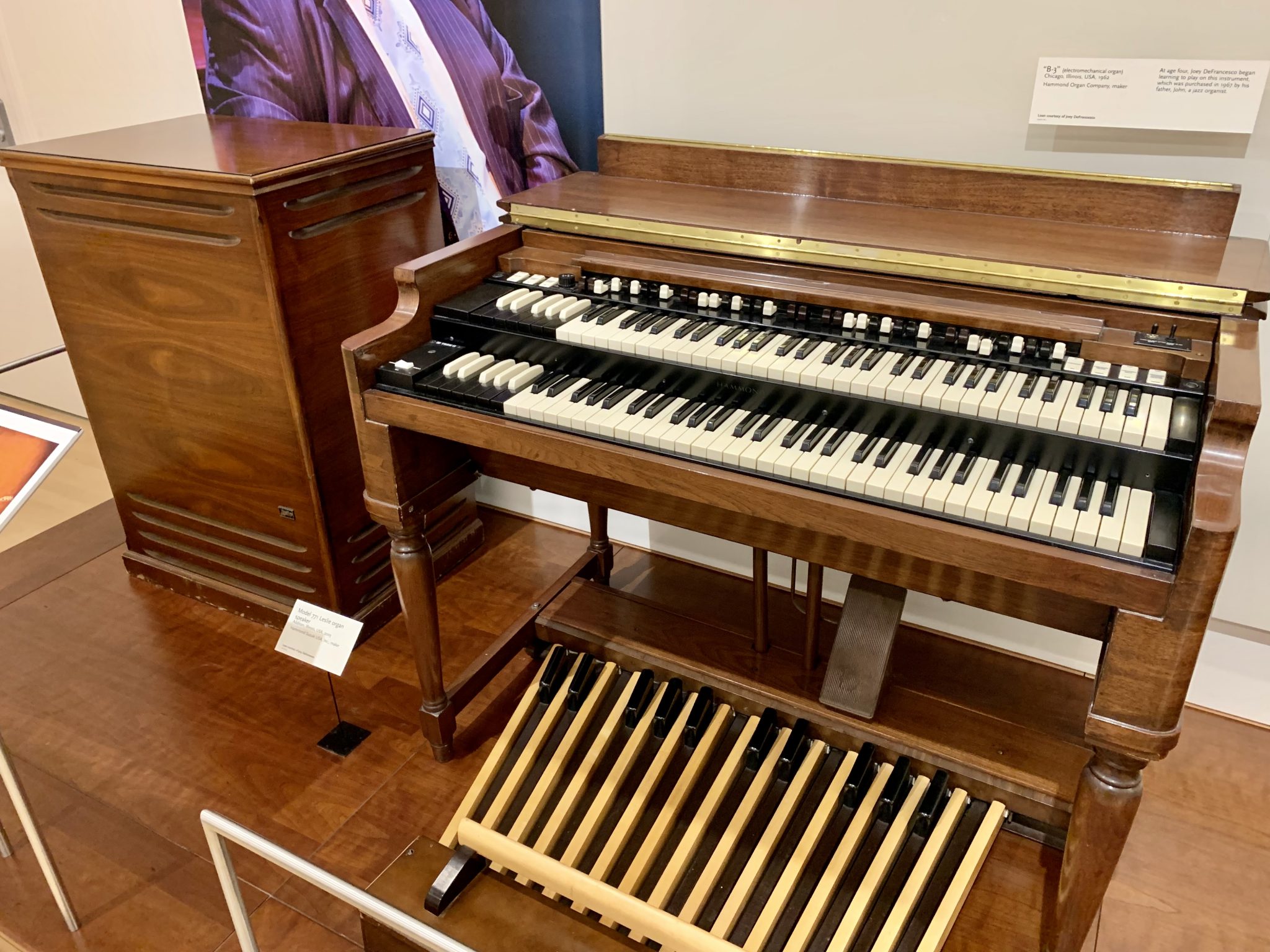
More than you probably want to know:
Hammond organs generate tone mechanically then amplify it electronically. What does that mean exactly?
Imagine an electric motor with a metal disc attached to its shaft, kind of like a power saw. Rather than having sharped blades, the disc has a series of identical indentations around its circumference. An electromagnet is placed facing the spinning disc. As the disc edge moves closer and further away from the magnet, a waveform is generated. The number of indentations, their depth and shape determine the pitch and timbre of the tone.
Now imagine that the motor has a very long shaft with a lot of spinning discs attached, each with an associated electromagnet. Each disc has differently sized, spaced and shaped indentations. That’s now you get the complete set of pitches and timbres available on the organ.
Because the motor is relatively weak and the weight of all the tone wheels (as the discs are called) creates inertia, there’s a starting sequence to a Hammond. First you turn on the Start switch until the motor spins up, then engage the Run switch.
In the World Before Synthesizers, rock keyboard players had a trick. You could briefly turn off the Run switch, which would let the tone wheels start to spin down. This had the effect of lowering the pitch of each note. Turn the switch back on and the instrument would return to true pitch. Unless you miscalculated and let the switch off too long. In that case, there was an awkward silence where organ notes should be.
if you listen to old Deep Purple records, Jon Lord will give you a master class in the B-3 as a rock instrument.